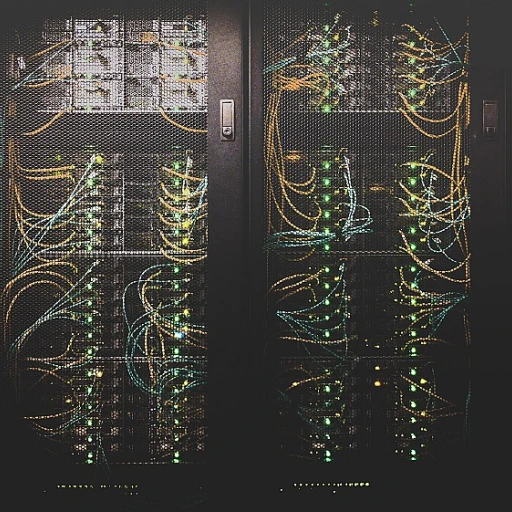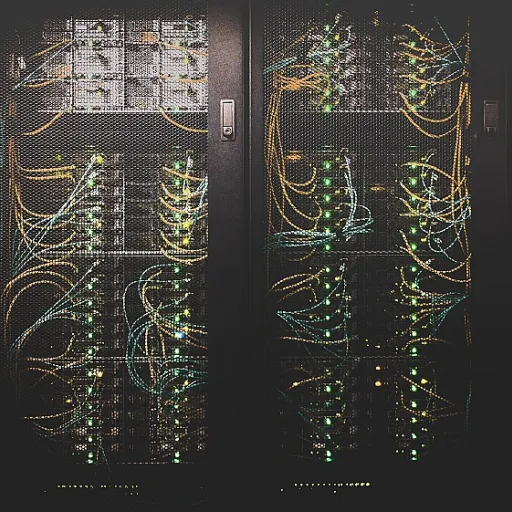
Defining kubernetes tolerations and taints
What Are Taints and Tolerations in Kubernetes?
Kubernetes has become the backbone of modern software deployment, offering a powerful way to manage containerized workloads across clusters. Two important concepts that help control where pods are scheduled within a cluster are taints and tolerations. These mechanisms allow administrators to influence pod scheduling decisions, ensuring that workloads land on the right nodes, especially when dealing with specialized hardware or specific operational requirements.
How Taints Work on Nodes
A taint is a property you can apply to a node in Kubernetes. When you taint a node, you’re essentially telling the Kubernetes scheduler not to place any pods on that node unless those pods can tolerate the taint. Taints are defined by a key, a value, and an effect (such as NoSchedule), and they are managed using the kubectl taint command. For example, if a node has special hardware or is under resource pressure, you might taint it so only certain pods are scheduled there.
Understanding Tolerations in Pod Scheduling
On the other side, tolerations are applied to pods. A toleration allows a pod to be scheduled on a node with a matching taint. This doesn’t guarantee the pod will be scheduled on that node, but it makes it possible. Tolerations are specified in the pod’s configuration and must match the taint’s key and effect. This mechanism gives you fine-grained control over which workloads can run on which nodes, complementing other features like node affinity and node selectors.
Real-World Example
Let’s say you have a worker node with a GPU for machine learning workloads. You can taint the node with a key like special-hardware=gpu:NoSchedule. Only pods with a matching toleration will be scheduled on this tainted node. This ensures that only the right workloads use the specialized hardware, optimizing resource allocation across your cluster.
Why This Matters for Modern Workloads
As clusters grow and workloads diversify, taints and tolerations become essential tools for managing pod scheduling and resource usage. They work alongside node affinity, the node controller, and other scheduling features to help organizations deploy software efficiently and reliably. For more on how these concepts fit into the broader landscape of software engineering, check out this guide on effective Mulesoft developer resumes and the skills needed for modern cloud-native environments.
Why tolerations and taints matter for modern software
Why precise pod scheduling is critical in modern clusters
As organizations scale their applications, the need for intelligent pod scheduling in Kubernetes becomes more apparent. Modern workloads are diverse: some require specialized hardware, others need isolation due to security or compliance, and many must avoid nodes under resource pressure. Taints and tolerations provide a flexible mechanism to control where pods are scheduled, ensuring that each pod lands on the most suitable node.
Enabling smarter resource allocation with taints and tolerations
By applying a taint to a node, administrators can signal that only pods with a matching toleration should be scheduled there. For example, a node with a GPU might be tainted to prevent non-GPU workloads from consuming its resources. This approach helps optimize resource usage and prevents accidental scheduling of incompatible pods.
- Node affinity and taints tolerations work together to fine-tune pod placement.
- Using
kubectl taintandkubectlcommands, teams can dynamically adjust cluster behavior as needs evolve. - Controllers and the node controller play a key role in enforcing these rules across the cluster.
Supporting reliability and scalability in cloud-native environments
With the rise of cloud-native architectures, the ability to direct workloads to the right nodes is essential. Tainting nodes under high load (using noschedule or preferNoSchedule) helps avoid overcommitting resources, while tolerations let critical pods tolerate taints and remain scheduled even during kubernetes pressure scenarios. This improves reliability and maintains service quality as clusters grow.
For more on how Kubernetes features can help you respond to changes in your cluster, see this guide on how to get notified when your Kubernetes custom resource changes.
How tolerations and taints work together
How taints and tolerations interact in pod scheduling
In Kubernetes, the relationship between taints and tolerations is central to controlling where pods are scheduled within a cluster. Taints are applied to nodes usingkubectl taint, marking them as unsuitable for certain pods unless those pods declare a matching toleration. This mechanism ensures that only workloads with the right toleration are scheduled onto tainted nodes.
When a node is tainted, for example with kubectl taint nodes node1 key=value:NoSchedule, it signals the scheduler to avoid placing pods on that node unless the pod has a toleration for the specific key and effect. The toleration in the pod’s spec tells Kubernetes, “this pod can tolerate the taint on this node.” Without a matching toleration, the pod will not be scheduled there.
This interplay is especially important for scenarios involving specialized hardware or pressure node situations. For instance, if a node is equipped with GPUs or other special resources, a taint can prevent general workloads from being scheduled there, while only pods with the appropriate toleration and possibly node affinity will be allowed. This is also useful for managing workloads during maintenance or under resource pressure, where taints can temporarily cordon off nodes.
- Taints keep unwanted pods off certain nodes.
- Tolerations allow specific pods to be scheduled on tainted nodes.
- Pod scheduling decisions are made by the Kubernetes scheduler, which checks both taints on nodes and tolerations in pods.
Common use cases in cloud-native environments
Real-World Scenarios for Taints and Tolerations
Kubernetes taints and tolerations are essential tools for managing how pods are scheduled across nodes in a cluster. In cloud-native environments, their practical applications are wide-ranging and directly impact the reliability and efficiency of workloads.- Isolating Critical Workloads: When certain workloads require dedicated resources or enhanced security, administrators can taint nodes with a specific key. Only pods with a matching toleration will be scheduled on these tainted nodes, ensuring that sensitive applications remain isolated from general workloads.
- Handling Specialized Hardware: Some nodes may have GPUs or other specialized hardware. By applying a taint to these nodes, only pods that can utilize this hardware and have the appropriate toleration will be scheduled there. This prevents resource contention and ensures optimal use of expensive hardware.
- Managing Node Pressure: In situations where a node is under memory or disk pressure, Kubernetes can automatically taint the node. This signals the scheduler to avoid placing new pods on the pressured node unless they have a toleration for the specific taint. This helps maintain cluster stability and prevents overloading.
- Maintenance and Upgrades: During maintenance, administrators can taint nodes with a
NoScheduleeffect. This prevents new pods from being scheduled while allowing existing pods to complete their tasks, supporting smooth rolling updates and node draining. - Node Affinity and Advanced Scheduling: Taints and tolerations often work alongside node affinity rules. While node affinity expresses a preference for scheduling pods on certain nodes, taints enforce strict requirements. Together, they provide fine-grained control over pod scheduling and placement.
Practical Example: Using kubectl to Taint Nodes
For administrators, thekubectl taint command is the primary way to apply taints to nodes. For example, to prevent general pods from being scheduled on a worker node with special hardware, you might run:
kubectl taint nodes node1 special-hardware=true:NoSchedulespecial-hardware key will be scheduled on node1. This approach is widely used in production clusters to ensure that workloads are placed exactly where they are needed.
Controller Patterns and Automated Scheduling
Modern Kubernetes clusters often rely on controllers to automate the application of taints based on node health or cluster policies. For instance, the node controller can automatically taint nodes that become unreachable, preventing new pods from being scheduled until the node recovers. This automation is crucial for maintaining high availability and resilience in dynamic environments. By leveraging taints, tolerations, and node affinity, organizations can achieve robust, flexible, and predictable pod scheduling, even as their infrastructure scales and evolves.Potential pitfalls and best practices
Common mistakes and how to avoid them
While Kubernetes taints and tolerations offer powerful ways to control pod scheduling, they can introduce challenges if not used carefully. Here are some pitfalls teams often encounter, along with best practices to help keep your cluster healthy and workloads reliably scheduled.
- Overusing taints on nodes: Applying too many taints to a node can make it difficult for pods to be scheduled, especially if matching tolerations are missing. This can lead to underutilized resources or even critical workloads being blocked. Regularly review your taints with
kubectl get nodes -o jsonto ensure only necessary taints are present. - Missing tolerations on pods: If a pod does not have the correct toleration for a tainted node, it will not be scheduled there. This is a common issue when deploying workloads that require access to specialized hardware or nodes under pressure. Always verify your pod specs include the right tolerations for the intended node.
- Confusing taints with node affinity: Taints and tolerations work by repelling pods from nodes unless explicitly tolerated, while node affinity attracts pods to nodes with specific labels. Mixing these concepts can lead to unexpected scheduling behavior. Use taints for exclusion and affinity for preference.
- Improper use of NoSchedule and NoExecute effects: The
NoScheduleeffect prevents new pods from being scheduled on a node, whileNoExecutealso evicts existing pods. Misapplying these can disrupt running workloads. Double-check the effect you specify when usingkubectl taintor editing node specs. - Neglecting to monitor node pressure: Kubernetes may automatically taint nodes under resource pressure (like memory or disk). If your workloads do not tolerate these taints, they may be evicted or unscheduled. Monitor node status and ensure critical pods can tolerate expected pressure taints.
Best practices for reliable scheduling
- Document taints and tolerations: Keep clear documentation on why each taint is applied and which pods are expected to tolerate them. This helps avoid confusion as your cluster evolves.
- Test scheduling scenarios: Use staging environments to simulate taint and toleration configurations before rolling them out to production. This helps catch issues with pod scheduling or node utilization early.
- Automate taint management: Consider using a controller or automation scripts to manage taints on worker nodes, especially in dynamic environments where nodes are frequently added or removed.
- Review and clean up: Periodically audit your cluster for unused taints or tolerations that may have been left behind after changes to workloads or infrastructure.
By understanding the nuances of taints, tolerations, and node affinity, teams can ensure their Kubernetes clusters remain flexible and resilient, ready to handle diverse workloads and future scheduling challenges.
The evolving role of scheduling in the future of software
Shifting Paradigms in Pod Scheduling
Kubernetes scheduling is not just about placing pods on available nodes anymore. As organizations demand more from their clusters, the role of scheduling is evolving. Taints and tolerations, along with node affinity and other mechanisms, are at the heart of this transformation. They allow for more granular control over where and how workloads are scheduled, especially as clusters grow in size and complexity.From Static Rules to Dynamic Decisions
Traditionally, scheduling decisions were based on simple resource checks. Now, with taints, tolerations, and affinity rules, Kubernetes can make dynamic decisions based on:- Node health and pressure (for example,
kubernetes pressuretaints) - Specialized hardware requirements (like GPUs or SSDs)
- Workload isolation and security needs
- Custom business logic via controllers and policies
Automation and Intelligence in the Cluster
The future will likely see more automation in how taints and tolerations are applied. Node controllers and custom operators can automatically taint nodes under certain conditions, such as high resource usage or when specialized hardware is detected. Pods with matching tolerations will then be scheduled accordingly, reducing manual intervention and human error.Best Practices for the Next Generation
To prepare for these changes, teams should:- Regularly review taints and tolerations applied to nodes and pods using
kubectl taintandkubectl describe node - Leverage node affinity and anti-affinity alongside taints tolerations for precise workload placement
- Monitor cluster health and node pressure to adjust taints proactively
- Document the rationale behind each taint and toleration to ensure maintainability















